5 Profitable One-Person Businesses That Don’t Require A Personal Brand
Plus Real World Examples of People Making Serious Cash
These days, one-person businesses are often equated with starting a personal brand.
This is the social media / Dan Koe effect. And don’t get me wrong, some people print money through their own personal brands.
But what if you could build a lean, profitable one-person business…
Without turning your life into content
Without showing your face everywhere on social media
Without needing to even use your name
Well, as it turns out, you don’t need to become the product.
You just need to create systems and a business model that has leverage.
That’s why I’m sharing 5 online business models that work without establishing personal brands, as well as real world examples of people who have pulled this off so you can copy their methods.
⭐I’m bringing you this newsletter alongside doola - a business-in-a-box solution that makes registering your LLC, C-Corp, or S-Corp a breeze.
Plus, use doola to manage your bookkeeping needs and to file your taxes to maximize potential deductions for your business. ⭐
1. YouTube (Faceless or Creator-Driven, Not Personal-Brand Driven)
YouTube is one of the most powerful income engines out there.
It’s also a platform that’s enabled me to earn $250,000+ between AdSense, affiliate, and sponsorship revenue while maintaining very high margins as a solo operator.
Now my channel is named Tom Blake and has my face all over the content. So it might seem like a personal brand.
But it’s really not.
The majority of my traffic comes from YouTube search and consists of one-time viewers looking for an answer to a problem they’re having. I get some browse traffic too. However, my repeat viewership from subscribers is pretty lackluster.
The truth is tons of creator-driven channels on YouTube don’t have cult followings or rely on their own personalities to generate revenue. Instead, they just package information in a clear, value-driven way and monetize accordingly.
And that’s regular channels.
Even more creators are now building faceless YouTube channels that rely on B-roll, stock footage, AI voiceovers, and animations to create videos.
I also love this one-person business model because it’s easy to scale and outsource.
Tools like Gling.ai let you create ready-to-post talking head content without doing any editing. You can use Opus Clips to create your thumbnails. And video editing agencies are often in the $300 to $500 monthly price range if you want to outsource everything.
But enough about this business model. Here are some examples:
✅ Real World Examples:
The Infographics Show: A faceless animation channel with 15M+ subscribers. Covers topics like military strategy, true crime, and world history. No host — just storytelling + motion graphics. Makes money from AdSense and brand deals.
Success Archives: Compiles audio clips of motivational speeches with cinematic footage. Voiceovers are AI or repurposed. The channel has over 1M views and over 500,000 subscribers.
Debt Free Millennials: A creator-driven finance channel where the host provides practical advice and tips without pushing a lifestyle or building a massive personal brand. Monetizes with AdSense, affiliate links, and digital products.
💡 Revenue Streams: AdSense, affiliate links, channel sponsorships, digital products.
😎 UPDATE: I’ve put out a new eBook that’s bundled with my Skool Community called The YouTube Freedom Launchpad. If you want a step-by-step guide on how to start and scale your own profitable YouTube channel as efficiently as possible, this is for you!
2. Affiliate Marketing
Affiliate marketing is one of the quietest ways to build wealth online.
You recommend a product or service, and earn a commission when someone buys through your link. So, you never have to build your own brand, product, or fulfillment systems.
Affiliate marketing on low-ticket CPA offers is one of the main ways I made $1M+ in my twenties. And again, pretty much all of my traffic came from content that answers people’s questions and didn’t involve a personal brand at all.
You can do this through a blog, email list, YouTube channel, Pinterest page, TikTok shop, or even with paid ads arbitrage, all without revealing your identity.
Now the real world examples I’m going to share have grown into larger operations. But the model still works for solo owner-operators, and these affiliate marketing engines also started out small.
✅ Real World Examples:
Our Sleep Guide: A faceless blog that reviews mattresses and bedding products. Makes thousands per month through affiliate links to Amazon and mattress companies. Uses SEO and Pinterest to drive traffic.
LuciesList.com: A trusted “gear guide for new moms” that reviews strollers, car seats, and baby products. Drives traffic through Google, Pinterest, and email newsletters.
OutdoorGearLab.com: A niche review site focused on hiking, climbing, and outdoor equipment. No personal branding, but content is presented under a “team of testers” persona.
💡 Revenue Streams: Amazon Associates, SaaS referrals, affiliate programs (many pay recurring revenue), niche product reviews, selling backlinks plus affiliate deals.
Related: How To Earn Affiliate Income On Substack.
3. Print on Demand Selling
Print on Demand (POD) lets you create and sell physical products like t-shirts, mugs, and journals without inventory, shipping, or handling returns.
You create a design, upload your products to platforms like Etsy, Redbubble, or Shopify, and the fulfillment is done automatically when you generate sales.
This is something I’ve done over the years and tested out a lot when I was back in college.
I suck at print on demand.
Honestly, most shops probably never get more than a few sales. But if you find the right niche and hit the right trends, print on demand can be an excellent one-person business model with okay margins that’s easy to scale.
Just take a look on Etsy in any niche and find the top sellers. Chances are, you’ll find shops with thousands of sales that are clearly fulfilling orders via a print on demand partner.
✅ Real World Examples:
DinoMike on Redbubble: An illustrator who sells quirky, niche designs featuring dinosaurs. Uses print-on-demand to generate passive sales across multiple platforms.
Old School Culture Etsy Shop: A store that sells meme merchandise like t-shirts and has over 31,000 lifetime sales.
Ryan Hogue’s POD Empire: Ryan runs multiple Etsy and Amazon POD stores using automation. He doesn’t rely on a personal brand to make sales — and his YouTube teaches others how to do the same.
💡 Revenue Streams: Etsy, Amazon Merch, Redbubble, Shopify stores, and other platforms where you sell online.
Note: My favorite solution is Printify, and this is the POD company I’ve used over the years and recommend.
4. Micro SaaS Businesses
A Micro SaaS is a simple software product that solves one niche problem.
This is probably one of the more viral one-person business models you might have seen on Twitter. And guys like Levelsio have shown how it’s possible to scale to $3+ million per year as a solo coder, it’s nuts.
Now I just started vibe-coding recently (and made my first couple bucks in the process!). So, this one-person business model definitely is new territory for me.
But no-code solutions truly let anyone build and test new SaaS / app ideas. And it seems like this is a case of throwing things against the wall until you find something that resonates with the market.
✅ Real World Examples:
Tweet Hunter: Built as a solo project, this tool helps creators write, schedule, and repurpose tweets using AI. Grew to $1M ARR in under 2 years and sold for an 8-figure exit. Initially launched on Product Hunt and grew with a lean team and word of mouth.
Mailtimer.io: A simple countdown timer tool for email marketers. Solves one problem well. Built by a solo founder who earns a few thousand in MRR with minimal upkeep.
Marc Lou: Marc Lou is another one-person operator who turned several SaaS products into $100,000+ in monthly income. He’s building a personal brand now, but his first few products were just him coding and sharing progress on Twitter.
💡 Revenue Streams: Subscriptions, pay-per-use, freemium upsells, in-app ads.
5. Simple Service-Based Business
I’d argue this is the fastest one-person business model you can start that also helps you buy your freedom and quit your job (if that’s your goal.)
The idea is probably one you’re familiar with: offer a high-demand service (like SEO, design, email marketing, video editing, lead generation, etc.), charge a monthly retainer, and deliver results.
I’ve done this at several points throughout my digital nomad adventures. I ran a PPC advertising business with a friend at one point. And I eventually turned my freelance writing work into more of a service-based offering to several clients and productized the whole thing a lot more.
Getting started is hard. There’s a lot of cold emailing or asking around your network for opportunities. But I’ve consistently found that if you over-deliver on your first clients, referrals and positive word-of-mouth generally follow and help you scale.
✅ Real World Examples:
DesignJoy: Built a one-man design agency that made $1M+/year offering “unlimited design” subscriptions. No personal brand, just results. Clients came via referrals and Product Hunt.
Cold Email Wizard (Daniel Fazio): Runs a productized cold outreach service. Built his brand later, but his offers work with or without an online presence. Uses email and automation to run lean.
💡 Revenue Streams: Monthly retainers, one-time projects, productized services, performance-based pricing.
Extra Reading - How To Actually Market Your One-Person Business.
Final Thoughts
Every one of these business models and real world examples proves that you can run a profitable one-person business without being famous.
And the funniest part is that a lot of these solo owner-operators turned their successes into personal brands. They get to have their cake and eat it too!
The takeaway: build your income engine and get it running smoothly. You can cross the personal branding bridge later once your one-person business is printing cash.
Thanks for reading and for all the support as always!
I’ll catch you in the next one.
Tom from WiFi wealth.
PS 👉 Get in touch with me and find my other work here: https://pillar.io/tomblakefinance
You can also find my list of awesome tools that I use to run my own one-person business.


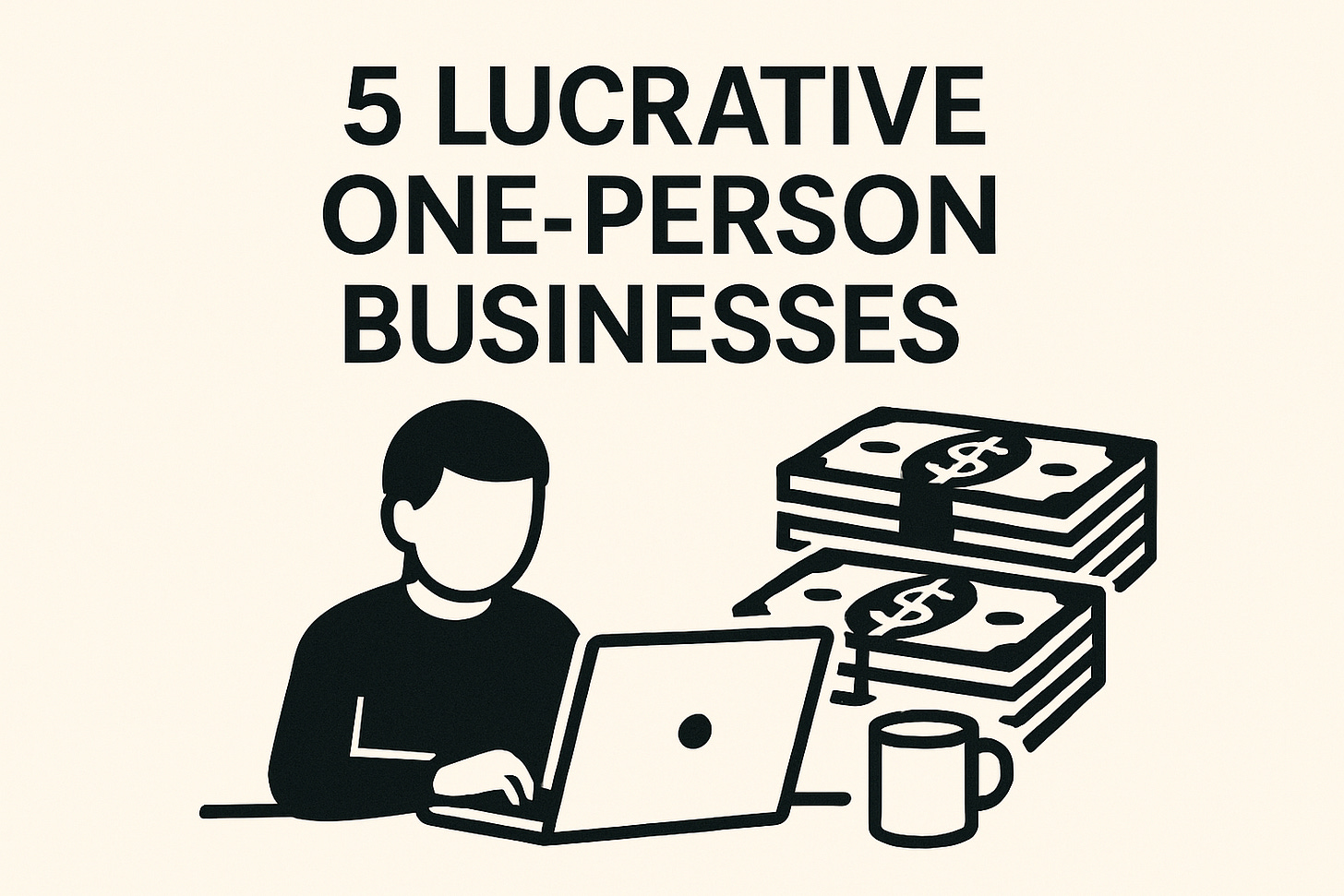
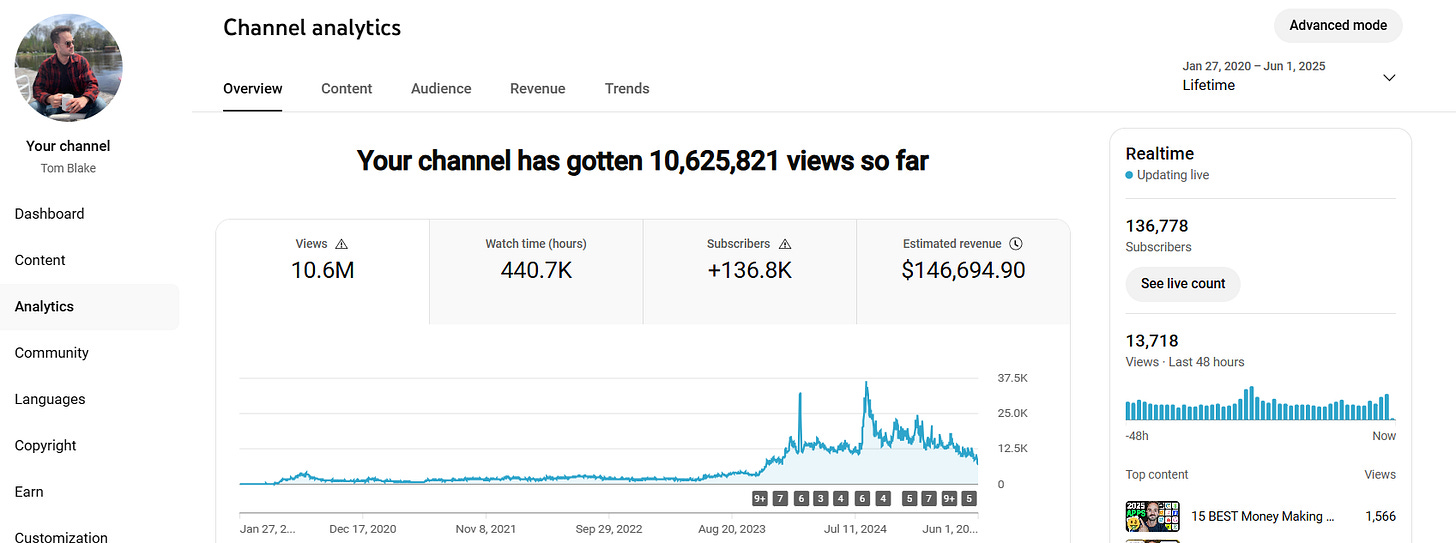
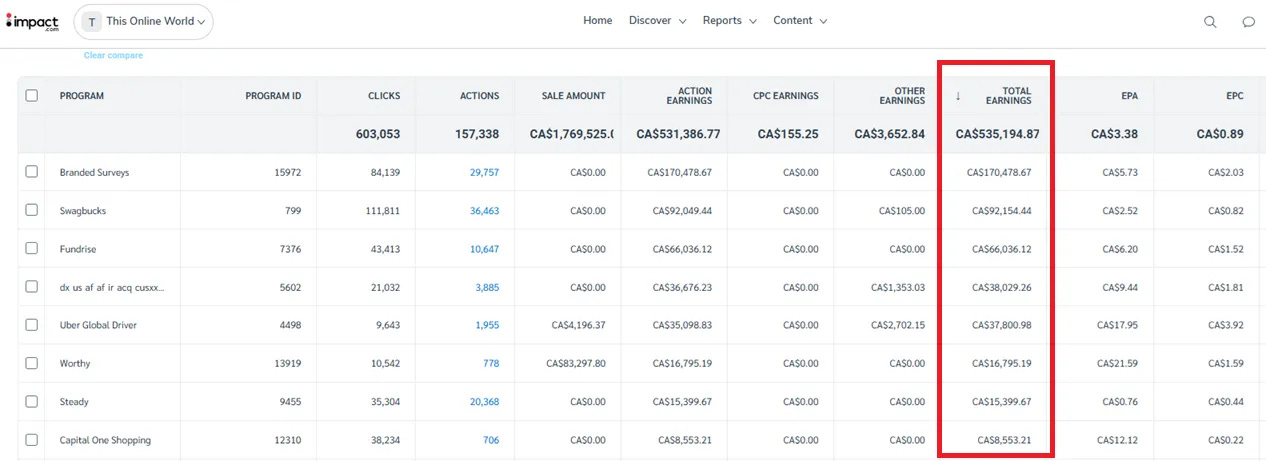
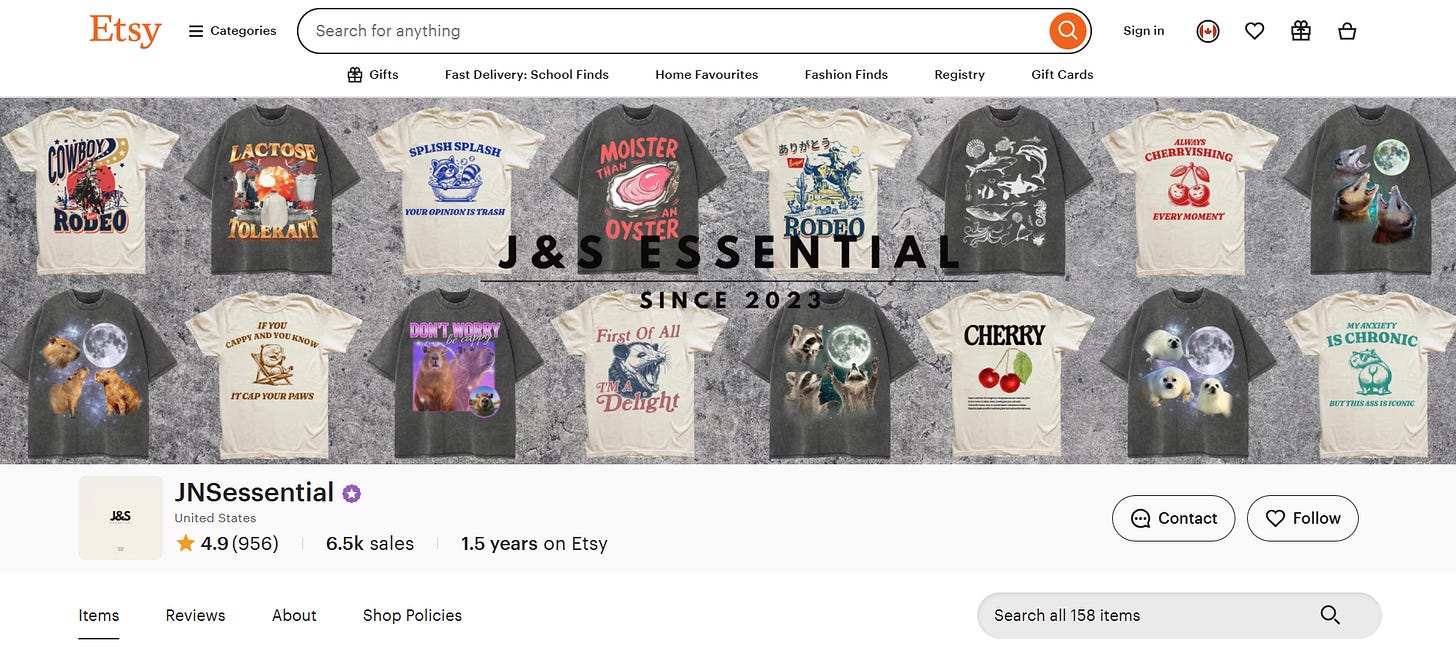
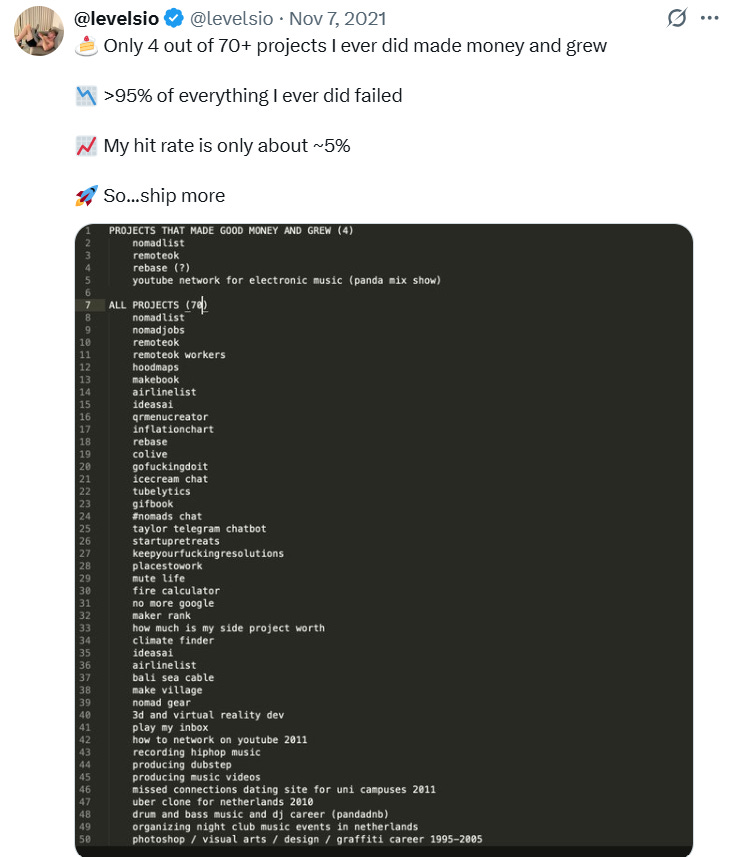
nice list!
Totally agree with the whole 'you're the product' I do NOT care if you know me or not, I just want sales 🤣